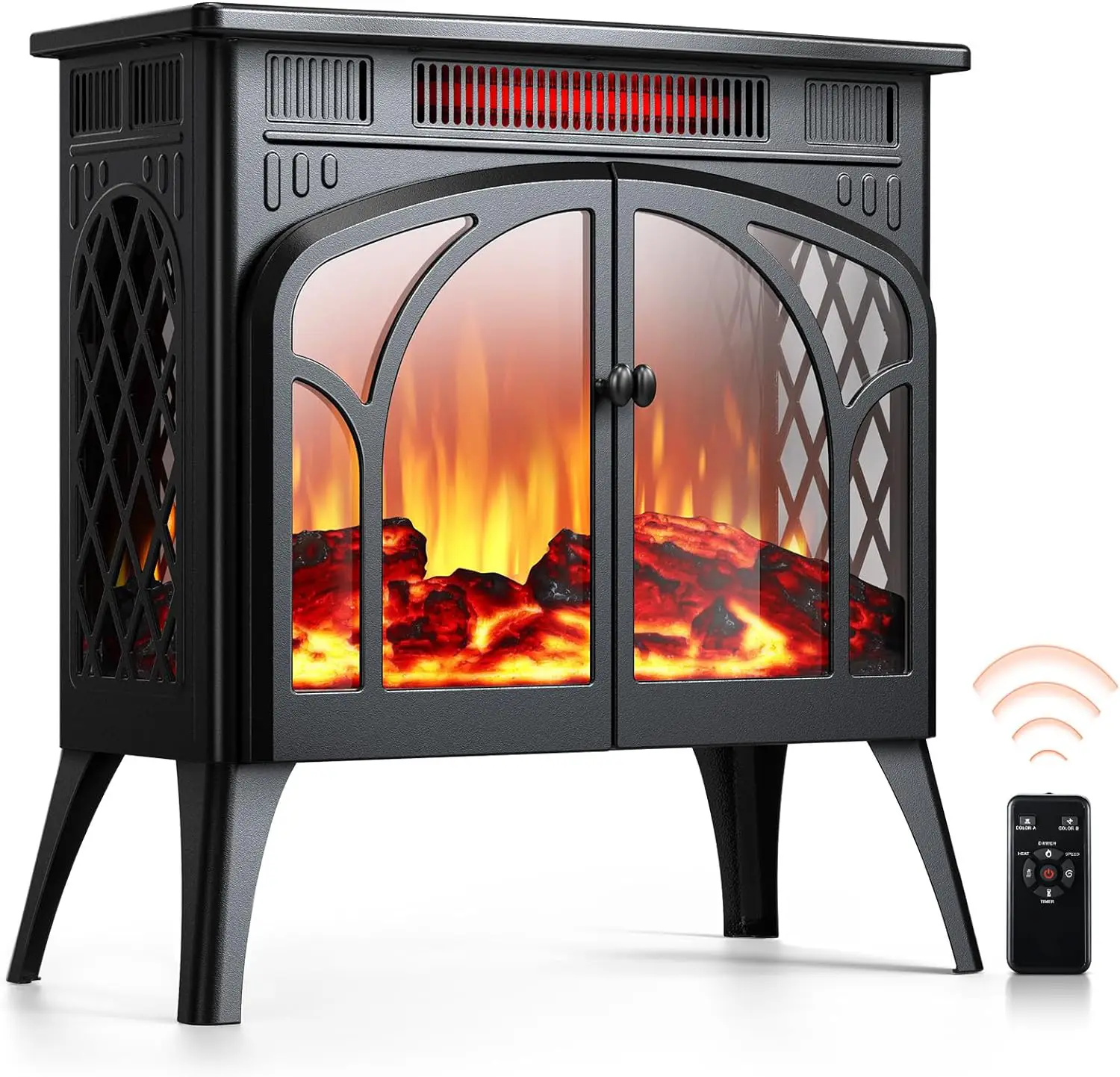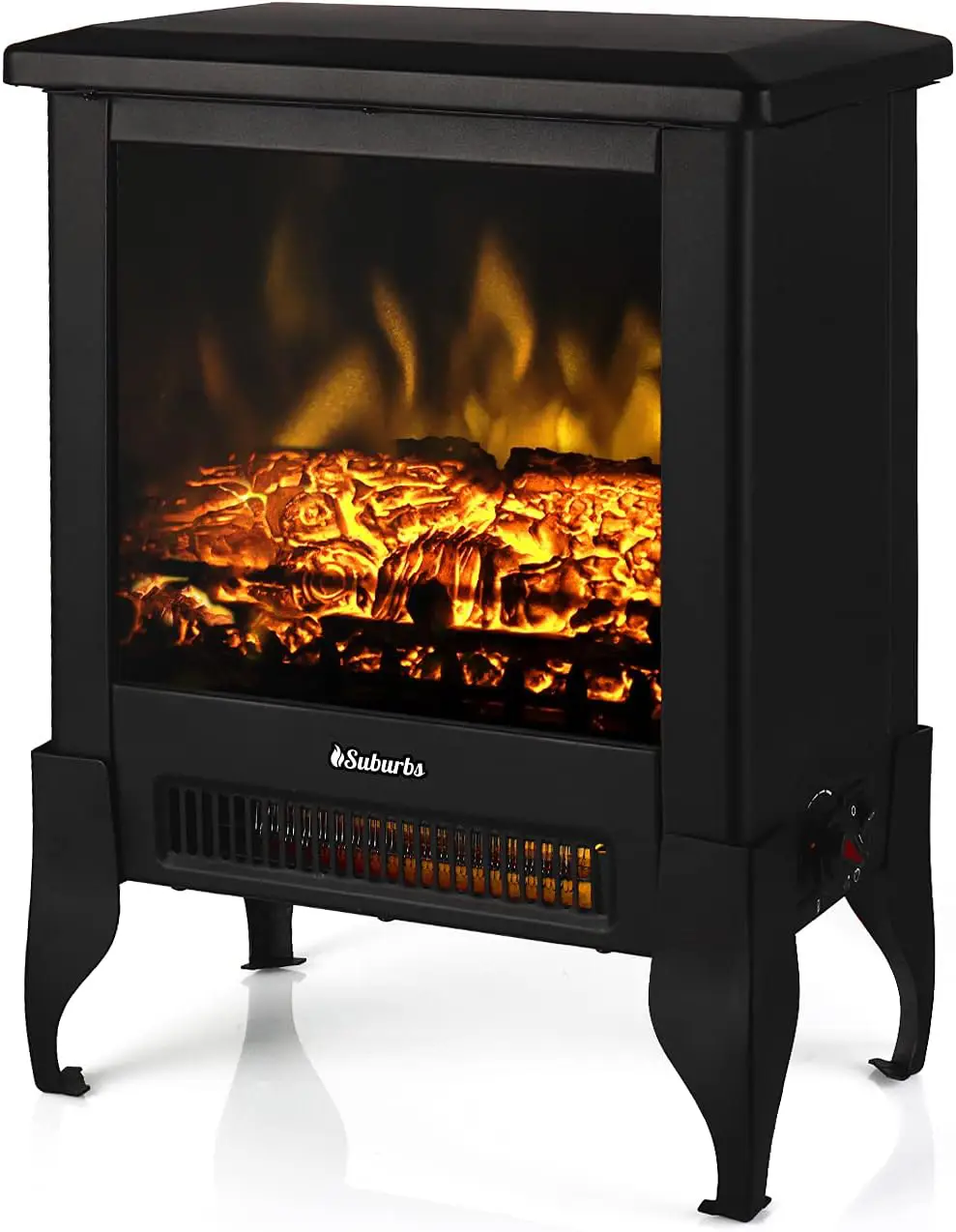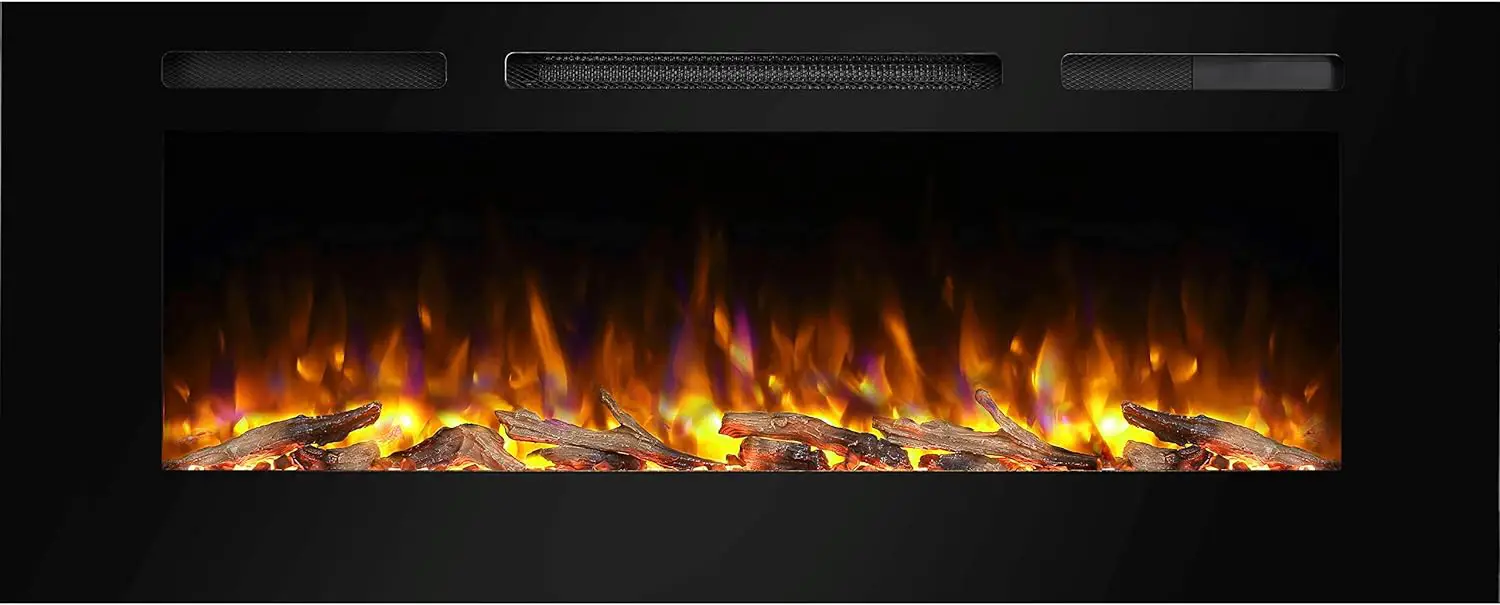Ventless fireplaces, also known as vent-free fireplaces, have gained popularity recently for their convenience and affordability. However, if you live in California, you may wonder if these fireplaces are legal.
No, the use of ventless fireplaces in California is illegal by law. Violating these laws can result in fines and potentially severe health risks. Depending on state rules, you will be fine, ranging from $200-$700.
California has some of the strictest air quality regulations in the country, which has led to a ban on certain types of fuel-burning appliances.
In this blog post, we’ll explore whether ventless fireplaces are legal in California and what regulations you need to be aware of if you’re considering installing one in your home.
Are Ventless Fireplaces Legal In California?
The 1996 California code of law determines that ventless or vent-free fireplaces will be illegal in the state. This decision was made due to concerns over the potential health hazards associated with these fireplaces.
California banned Vent-Free fireplaces due to the hazardous nature of building life-threatening carbon monoxide.
Ventless fireplaces produce combustion byproducts such as carbon monoxide, nitrogen dioxide, and water vapor, which can harm human health if not adequately ventilated.
Since ventless fireplaces do not have a chimney or venting system, there is no way to safely remove these byproducts from home.
California residents need to be aware of the regulations surrounding ventless fireplaces in the state. Violating these laws can result in fines and potentially severe health risks.
If you’re considering installing a fireplace in your home, it’s recommended to consult with a licensed professional to ensure that the fireplace meets all applicable codes and regulations.
While some other states may allow the use of ventless fireplaces, California has strict air quality regulations that prioritize the health and safety of its residents. However, it’s important to note that this law has some exceptions.
For example, decorative ventless fireplaces that use non-combustible gas and do not produce heat are allowed. Additionally, some ventless fireplaces are equipped with oxygen depletion sensors that shut off the fireplace if the oxygen level in the room drops too low.
Try Our Recommendation:
| Image | Product | Details | Price |
|---|---|---|---|
 |
Rintuf Electric Fireplace Heater, 1500W Infrared Fireplace Stove | Power Source: Corded Electric Product Dimensions: 23.5″D x 10.7″W x 24.3″H Material: Stainless Steel Finish Type: Polished Installation Type: Freestanding Heat Output: 5100 BTU |
Check Price |
 |
TURBRO Suburbs TS17 Compact Electric Fireplace | Power Source: Corded Electric Product Dimensions: 8″D x 14″W x 18″H Material: Metal Installation Type: Freestanding Heat Output: 4777 BTU |
Check Price |
 |
PuraFlame Alice 50 Inches Recessed Electric Fireplace | Power Source: 110v Product Dimensions: 5.9″D x 50″W x 20.25″H Material: Metal Installation Type: Built-In Heat Output: 5100 BTU |
Check Price |
Fireplace Code Requirements in California
In California, fireplace code requirements are established to ensure safety, efficiency, and environmental compliance. These regulations vary depending on whether the fireplace is new construction, an existing structure, or a remodel. Here are some key points to consider:
General Requirements
- Building Codes:
- Compliance with the California Building Code (CBC) and the California Residential Code (CRC) is mandatory for all new constructions and significant remodels.
- Fireplaces must meet the standards set forth by these codes, which include structural integrity, ventilation, and combustion air requirements.
- Air Quality Regulations:
- The California Air Resources Board (CARB) and local air quality management districts set regulations to control emissions from wood-burning fireplaces.
- In many areas, the installation of new wood-burning fireplaces is restricted or banned. Instead, gas fireplaces or EPA-certified wood stoves are recommended.
- EPA Standards:
- Any new wood-burning appliances must meet the Environmental Protection Agency (EPA) standards for emissions. This typically means using EPA-certified wood stoves or inserts.
Specific Requirements
- Clearance and Ventilation:
- Adequate clearance from combustible materials must be maintained.
- Proper ventilation is essential to ensure the safe operation of the fireplace and to prevent the buildup of harmful gases like carbon monoxide.
- Chimney Specifications:
- Chimneys must be constructed and maintained according to specific guidelines to ensure they are capable of safely venting the fireplace.
- Chimneys should be inspected regularly for blockages, creosote buildup, and structural integrity.
- Spark Arrestors:
- Spark arrestors are required on the tops of chimneys to prevent sparks from escaping and potentially igniting roof materials or nearby vegetation.
- Fireplace Inserts:
- When installing fireplace inserts, they must be appropriately sized for the existing fireplace and comply with both the manufacturer’s installation instructions and local building codes.
- Hearth Dimensions:
- The hearth should extend a minimum distance from the fireplace opening to prevent fire hazards.
- Typically, the hearth extension is at least 16 inches in front of the fireplace opening and at least 8 inches to each side.
Local Regulations
- Local Jurisdictions:
- Always check with local building departments and air quality management districts for specific regulations in your area. Local jurisdictions may have additional requirements or more stringent rules based on regional concerns and air quality conditions.
- No-Burn Days:
- Many areas in California have “no-burn days” during which wood-burning is prohibited to prevent air pollution. These days are typically declared during times of poor air quality.
Retrofitting and Upgrading Existing Fireplaces
- Upgrades:
- Existing fireplaces can often be upgraded with EPA-certified inserts to improve efficiency and reduce emissions.
- Retrofitting Requirements:
- Retrofitting may require a permit and must meet current code requirements. It’s essential to ensure that a qualified professional performs the retrofit.
Permit and Inspection
- Permits:
- Obtaining the necessary permits before construction or modification of a fireplace is crucial. This ensures compliance with all applicable codes and standards.
- Inspections:
- Inspections by local building authorities are required to verify that the installation or modification meets safety and code requirements.
In Which States Are Ventless Fireplaces Illegal in the United States?
States of the US that banned the use of Ventless gas fireplaces are:
- Washington
- Arizona
- Colorado
- South Dakota
- North Dakota
- Kansas, Nevada
- Minnesota
- New Hampshire
- Alaska
- Texas
- New York
- Austin
- California
- Massachusetts

The Pros and Cons of Ventless Gas Fireplaces
Ventless gas fireplaces have gained popularity in recent years for their convenience and ease of installation. However, like any heating appliance, there are pros and cons to using a ventless gas fireplace.
Pros
- Easy installation: Ventless gas fireplaces can be installed in almost any homeroom since they do not require a chimney or flue. This makes them a convenient option for homeowners who want to add a fireplace without the hassle of a standard installation.
- Energy-efficient: Ventless gas fireplaces are highly efficient since they do not lose heat through a chimney or flue. This means that more of the heat produced by the fireplace stays in the room, making it a cost-effective option for heating your home.
- Environmentally friendly: Ventless gas fireplaces produce fewer emissions than traditional wood-burning fireplaces, making them a more environmentally friendly home heating option.
Cons
- Health risks: Ventless gas fireplaces produce combustion byproducts such as carbon monoxide, nitrogen dioxide, and water vapor, which can be harmful to human health if they are not adequately vented. While modern ventless gas fireplaces are equipped with oxygen depletion sensors that shut off the fireplace if the oxygen level in the room drops too low, there is still a risk of exposure to these byproducts.
- Moisture buildup: Ventless gas fireplaces produce water vapor as a byproduct, which can lead to moisture buildup in your home. This can cause mold and mildew growth if not properly ventilated.
- Limited heat output: While ventless gas fireplaces are energy-efficient, they also have a limited heat output compared to traditional wood-burning fireplaces. This means there may be better options for heating larger rooms or homes.
What Fireplaces Can I Install In California?
Types of fireplaces you can install in California are:
- Electric fireplaces
- Direct Vent Fireplaces
- B-Vent Fireplaces
- Chimney Vented Fireplaces
You May Also Like To Read:
Are Gas Fireplaces Legal To Use in California?
Yes, vented gas fireplaces are legal in California however, vent free fireplaces are illegal. CA local administration are now planning to phase out gas-fueled furnaces and water heaters in homes.
It’s important to note that gas fireplaces must comply with state and local building codes and regulations.
California has strict air quality regulations, meaning gas fireplaces must meet specific emissions standards. Ensuring that your gas fireplace is EPA certified and meets the state’s emissions requirements is essential.
Some cities and counties in California may have additional restrictions on fireplace installations, so it’s recommended to check with your local government before installing a gas fireplace in your home.

Safe Operating Guidelines for Ventless Gas Fireplaces
- Install the fireplace according to manufacturer instructions and local codes. Make sure the installation is done by a qualified professional.
- Only use the type of gas specified by the manufacturer. Do not attempt to burn wood or other materials in the fireplace.
- Make sure the fireplace is installed in a well-ventilated area. Keep windows or doors open to provide fresh air and prevent the buildup of carbon monoxide and other harmful gases.
- Keep the fireplace clean and well-maintained. Follow the manufacturer’s recommended maintenance schedule and have the fireplace inspected and serviced regularly.
- Use a carbon monoxide detector in the room where the fireplace is located. Check the batteries regularly and replace them as needed.
- Do not leave the fireplace unattended while it is in use. Make sure the flame is completely extinguished before leaving the room.
- Keep flammable materials such as curtains, furniture, and decorations away from the fireplace. Make sure the area around the fireplace is clear of clutter.
- Do not use the fireplace as a primary heat source. Ventless gas fireplaces are designed to provide supplemental heat and should not be used to heat an entire home.
What Maintenance is Required For a Gas Fireplace?
- Regular maintenance is essential to ensure a gas fireplace’s safe and efficient operation. Here are some maintenance tasks that should be performed regularly:
- Use a non-abrasive glass cleaner and a soft cloth to clean the glass doors of the fireplace. Do this when the glass is cool, and the fireplace is turned off.
- Remove the logs and burner from the fireplace and use a soft brush or vacuum to remove any dirt, dust, or debris. Be careful not to damage the logs or burner.
- Make sure the ignition system is working correctly. If the fireplace is not lit or the flame is not staying lit, there may be a problem with the ignition system.
- Inspect the gas connections for any signs of damage or wear. Make sure the connections are tight and secure.
- Make sure the ventilation system is precise and unobstructed. Check the chimney or venting system for any signs of damage or wear.
- Make sure the carbon monoxide detector is working correctly. Check the batteries regularly and replace them as needed.
- Have a qualified professional inspect and service the fireplace annually. They can check for potential problems and ensure the fireplace operates safely and efficiently.
FAQ
Can Ventless Fireplaces Make You Sick?
Ventless fireplaces, also known as vent-free fireplaces, can make you sick if they are not properly maintained or operated. This is because ventless fireplaces produce combustion byproducts such as carbon monoxide, nitrogen dioxide, and water vapor, which can harm human health if not adequately ventilated.
Can Ventless Fireplaces Be Converted to Vented?
Converting a vent-free fireplace to a vented fireplace would require significant modifications to the unit, including adding a chimney or venting system, which could be more practical and safer. Vent-free fireplaces are designed to operate without a chimney or venting system because they are designed to burn fuel more completely and efficiently, resulting in fewer harmful byproducts and emissions.
Can You Build a House With A Fireplace in California?
Yes, building a house with a fireplace in California is possible. However, it is essential to consider local building codes, regulations, and environmental factors before installing a fireplace.
How Do Ventless Fireplaces Work?
Ventless fireplaces, also known as vent-free fireplaces, work by burning gas or propane and releasing the resulting combustion gases directly into the room, rather than through a chimney or venting system.
Are ventless natural gas heaters legal in California?
No, ventless natural gas heaters are not legal in California due to strict indoor air quality regulations.
Are electric fireplaces legal in California?
Yes, electric fireplaces are legal in California.
Are gas fireplace inserts legal in California?
Yes, gas fireplace inserts are legal in California, provided they meet the state’s emission standards and other regulatory requirements.
Affiliate Disclosure: Fireplaceadviser.com is a participant in the Amazon Services LLC Associates Program. We may earn a commission when you click on certain links on this site and purchase.

Hello!! I am Jamal Khan. I often fix my home electric heaters and gas stove problems and research the common issues in the heating units to improve my knowledge and expertise. The aim of establishing fireplaceadviser.com is to share my expertise and knowledge with my audience.






